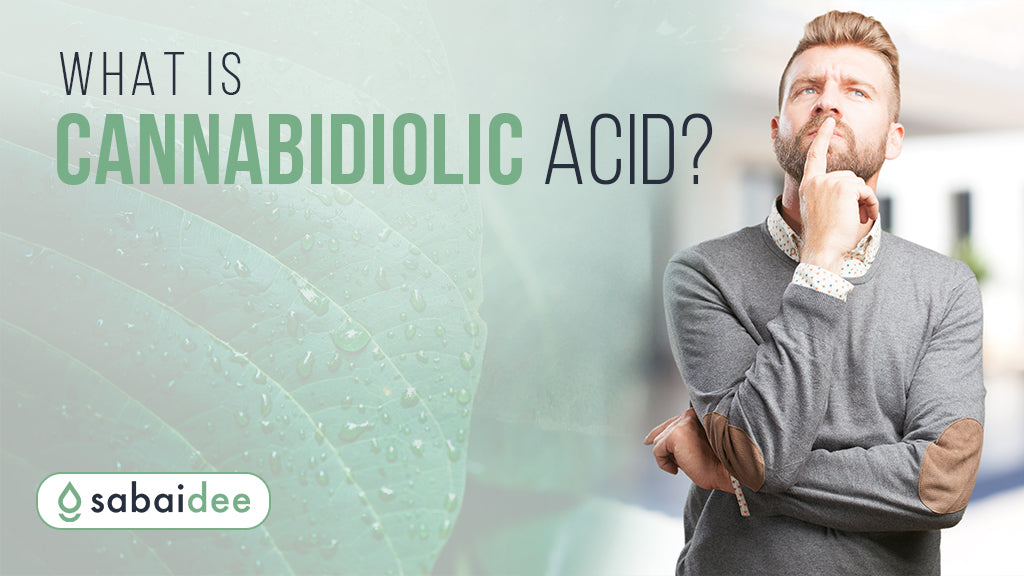
The cannabidiol (CBD) market has been booming for a few years now and its steady growth has led to research into other cannabinoids and their effects on humans. For many brands to stay at the top of their game, they have to evaluate, innovate and create new products that give them a competitive advantage.
Forward-thinking CBD brands have been researching alternative cannabinoids and started to include CBDa in their range of products. Why CBDa ask you?
Don’t worry if you’ve never heard of CBDa or don’t know what the benefits are; we’re going to break all of that down for you. In this guide, we explore what CBDa is, how it works and the benefits that it provides to users that consume it.
Cannabidiolic Acid (CBDa)
What is CBDa?

The millionaire dollar question — what is CBDa? This cannabinoid is similar to other phytocompounds that derive directly from hemp. The acronym “CBDa” is short for cannabidiolic acid, it’s essentially the compound prior to the formation of CBD.
Imagine CBD in its rawest form, that’s exactly what CBDa is.
This process starts with the alpha-compound, the “one compound to rule them all” if you will. This phytocompound is called cannabigerolic acid (CBGa), also known as the mother of all cannabinoids, CBGa is the precursor to all other cannabinoids and over the course of a plant’s lifespan is converted into CBDa and THCa.
All cannabinoids start in acidic form, as the hemp plant matures, these acid compounds are then converted into popular cannabinoids that we know and love like THC and CBD.
Research into CBDa is still in its early stages, however, despite the limited data available; there may be more than meets the eye with CBDa. Even though it’s unlikely that we’ll see CBDa products on the market, certain brands are combining CBD and CBDa together in product ranges.
Does CBDa Become CBD

Cannabinoids always start out as acidic compounds; for example, CBDa is the precursor compound to CBD. For cannabidiolic acid to become cannabidiol, decarboxylation has to occur and this usually happens as the hemp plant matures.
The process of decarboxylation occurs when applied heat removes a carboxyl group from a cannabinoid. By removing the carboxyl group, the cannabinoid breaks down and transitions into another cannabinoid.
As a result of decarboxylation, the remaining cannabinoid has different properties to its predecessor. As far as the debate between CBDa and CBD is concerned, evidence suggests that each cannabinoid has its own properties. This doesn’t answer the question of which one is better but instead suggests that each cannabinoid has its own specific attributes and effects on users.
A Brief Summary of CBDa

Cannabidiolic acid (CBDa) is a phytocompound that’s found in hemp plants. As the compound that CBD is derived from, researchers consider this as the precursor compound to CBD. During the process of harvesting, hemp plants are abundant in CBDa. After heat is applied through the process of decarboxylation, the CBDa transitions into CBD by removing the carboxyl group.
The full benefits of CBDa are currently unknown and as testing continues, we’ll be able to distinguish all benefits and side effects.
As the future of CBD products progress, we may see more products that combine CBDa and CBD together. With further testing, we may see manufacturers create products that provide greater benefits.
Frequently Asked Questions
What is CBDa?
The acronym “CBDa” is short for cannabidiolic acid, it’s essentially the compound prior to the formation of CBD.
Does Cbda convert to CBD?
The answer is yes, CBDa will convert to CBD naturally by way of time and heat.
Whats the difference between CBD and CBDa?
CBDa is the “raw” or unheated form of CBD
Shop Our CBD Products
